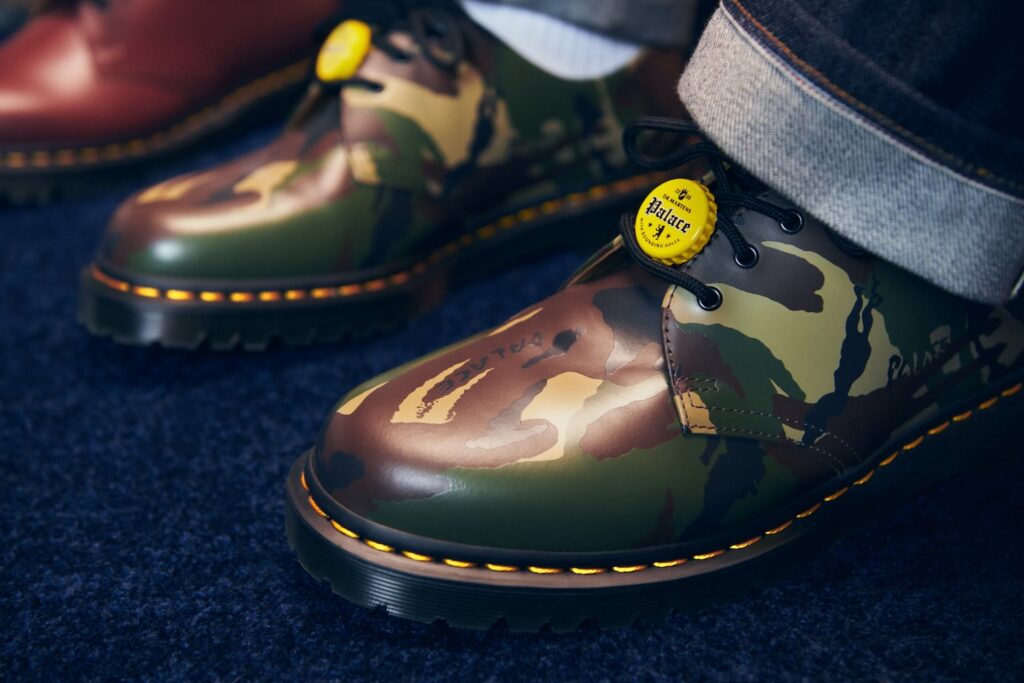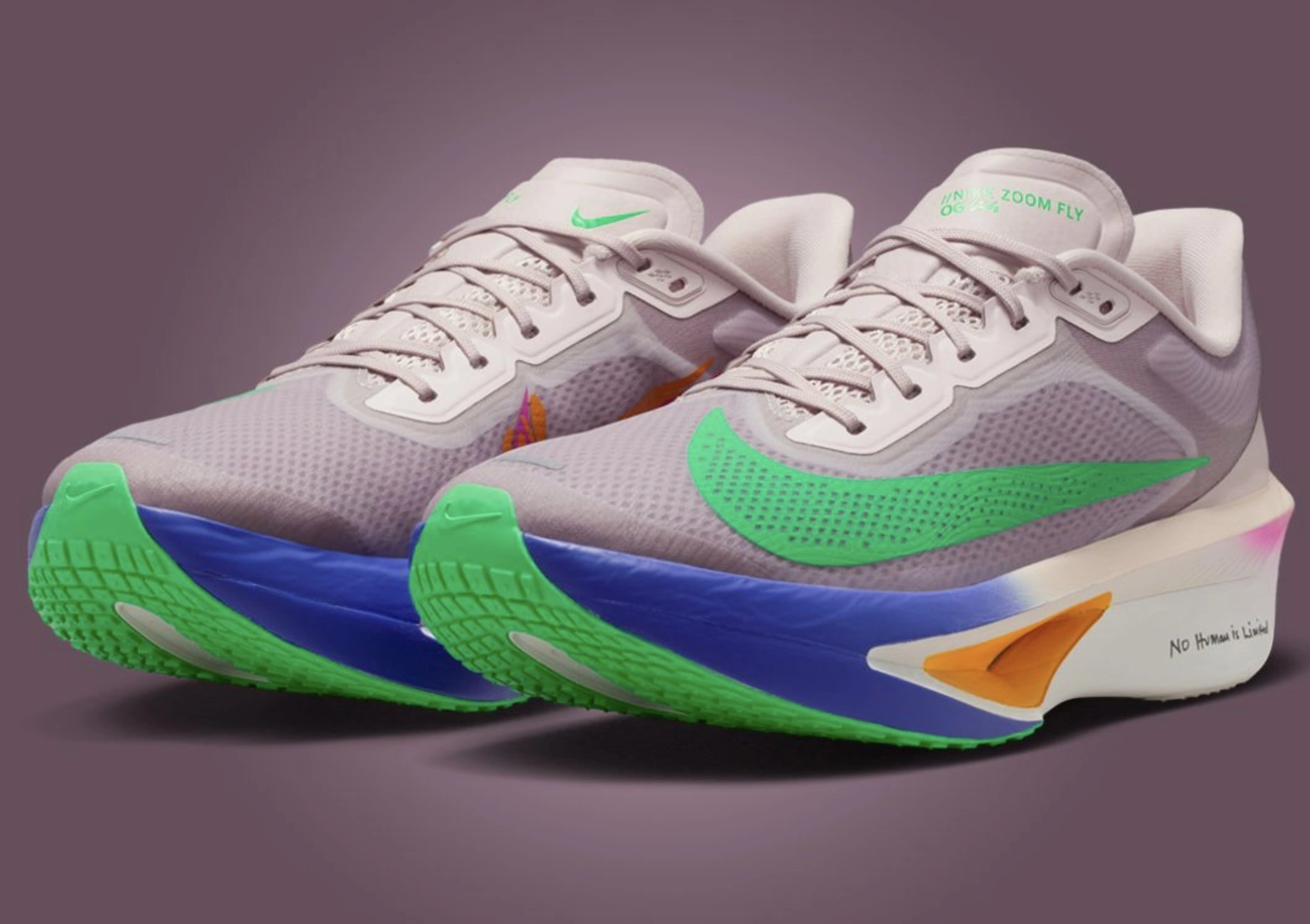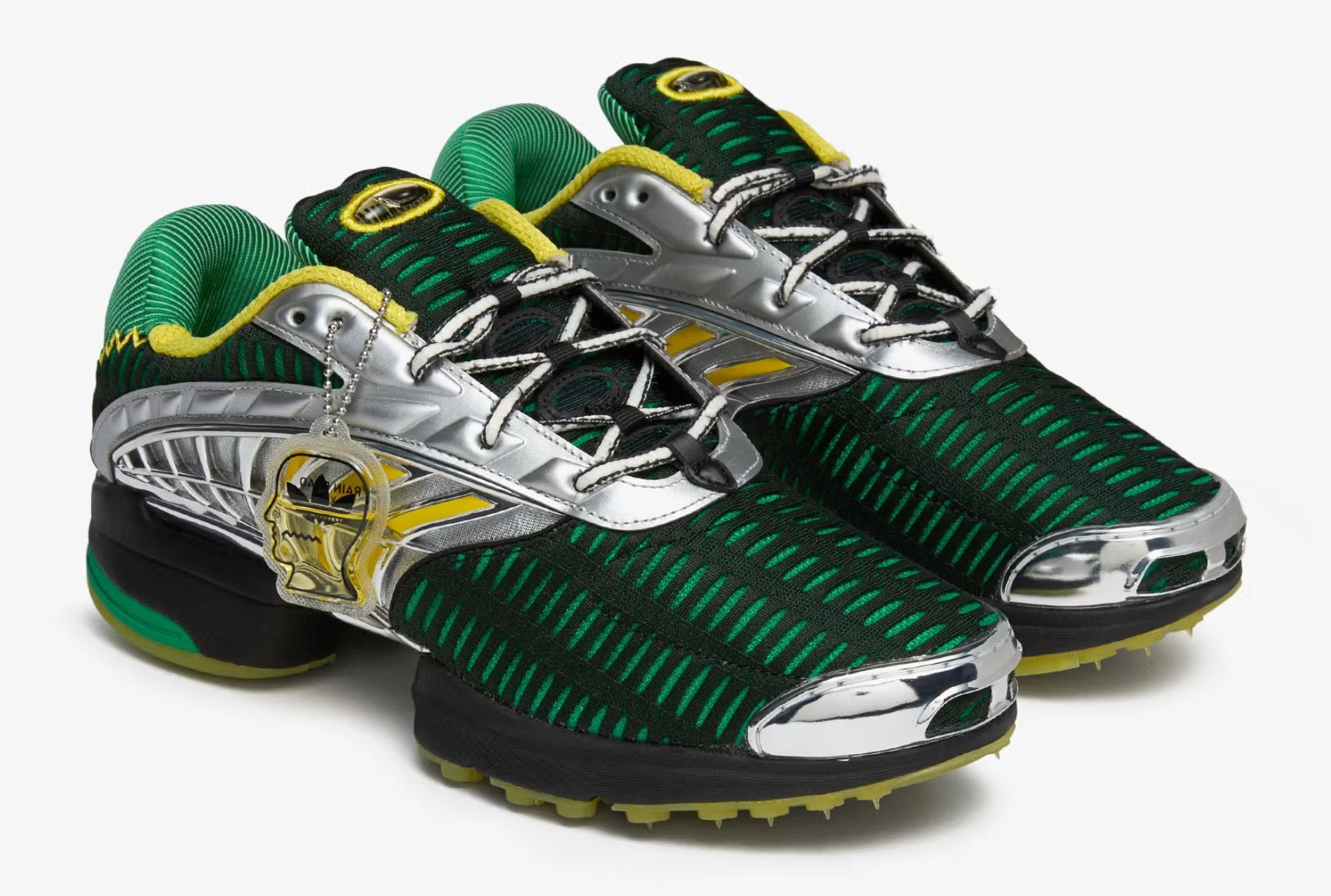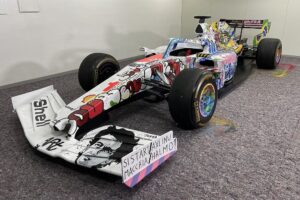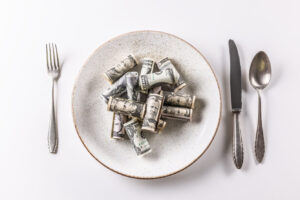In a fashion landscape dominated by nostalgic revivals and cultural reboots, few collaborations hit quite like the latest alliance between Dr. Martens and Palace. Drawing from an unexpected but delightfully offbeat source of inspiration—a short-lived 1988 bottle cap craze—the duo delivers a uniquely irreverent yet stylish capsule featuring three bold iterations of the legendary 1461 shoe. With its pointed blend of punk heritage and skater irreverence, the collection cements itself as a high-concept tribute to subcultural cool.
From Bottle Caps to Boutiques
The story begins not in a design studio, but in a schoolyard. In 1988, Matt S, a 13-year-old from Leytonstone, sparked an unlikely trend when he began customizing his shoes with colorful metal bottle caps. It was raw, scrappy, and completely grassroots—an innocent act of teenage rebellion that rippled across East London and beyond. For a few shining months, bottle caps became the unexpected accessory of the year, clanging and clinking down the corridors of British secondary schools. Then, as quickly as it came, the trend fizzled—until now.
Palace, never one to resist a subcultural rabbit hole, unearthed this near-forgotten fad and brought it into the luxury-sportswear fold with their inimitable sense of humor. Partnering with Dr. Martens—whose legacy in British youth culture is unmatched—was a natural fit. The 1461 model, known for its clean three-eyelet silhouette and everyday wearability, became the perfect canvas for their bottle cap fever dream.
A Trio of Subversive Statements
The Dr. Martens x Palace collaboration reimagines the 1461 in three distinct colorways: polished black, vivid red, and a daring metallic silver. All three pairs feature custom bottle cap motifs, embossed and applied with precision, creating a subtle nod to the 1988 trend without descending into kitsch. Each pair is finished with Palace branding on the heel tab, tongue, and insoles—minimalist but unmistakable.
The black pair is the most restrained: a punk classic retooled with an irreverent twist, suitable for both streetwear ensembles and more tailored stylings. The red version brings an aggressive pop of color, channeling the energy of ‘80s skate decks and punk zines. The silver variant, however, is the collection’s crown jewel—a high-shine, reflective masterpiece that blurs the line between artifact and fashion item. More than wearable, it’s a statement.
Craft Meets Chaos: Dr. Martens’ Influence
For Dr. Martens, this isn’t just another collaborative release—it’s a return to form. The brand’s rich history is steeped in anti-establishment symbolism, and the bottle cap theme dovetails with their long-standing ethos. “This wasn’t about trends or commercial appeal,” explains Dr. Martens creative director Darren McKoy. “It was about capturing a spirit. That scrappy, DIY energy—the feeling that anyone, anywhere, could spark a cultural moment.”
That ethos is reflected in the construction of the shoes. Each pair is crafted in Dr. Martens’ original Wollaston factory using the brand’s signature Goodyear welting and air-cushioned soles. The leather is smooth, the finish meticulous, but the energy remains raw. There’s something beautifully contradictory about a shoe that evokes playground rebellion while being assembled with such craftsmanship.
Palace’s Peculiar Genius
Palace has long operated in the liminal space between fashion and farce, treating nostalgia not with reverence, but with a wink. The label has mined everything from ‘90s television to forgotten British snack brands for creative inspiration, and this collaboration is no different. What makes the bottle cap motif work is Palace’s instinctive understanding of what resonates—not necessarily with the mainstream, but with those in the know.
Lev Tanju, founder of Palace, offered only a typically cryptic press comment: “Shout out to Matt S. Hope he sees this, bro.” It’s peak Palace—minimal context, maximal impact. But within that throwaway line is the heart of the entire project: the idea that even the most obscure cultural footnotes deserve a second life, reframed through the lens of contemporary fashion.
Beyond the Gimmick: Cultural Resonance
What makes the Dr. Martens x Palace 1461 collection more than just another collab drop is its layered storytelling. It’s about memory, humor, and the ways in which youth culture mutates over time. For British Millennials and early Gen Xers, the bottle cap fad was a flashpoint—silly, ephemeral, and yet oddly formative. To see it revived in such a high-concept, high-quality execution is both surreal and deeply satisfying.
There’s also a deeper dialogue here about material culture—how even the most disposable objects (a metal cap, a scuffed pair of school shoes) can be reframed as design inspiration. In an age of hyper-curated aesthetics and AI-generated trend forecasting, this feels refreshingly human. It’s a reminder that fashion can be playful without being pointless.
Launch Details and Hype Mechanics
The shoes released globally on April 5 via Palace’s physical stores, its webstore, and select Dr. Martens retail partners. Predictably, sellouts followed within hours, with the metallic silver pair commanding eye-watering resale prices. Palace also released a cheeky video campaign featuring a faux documentary about the 1988 trend, complete with VHS filters, exaggerated accents, and a fictionalized version of Matt S. waxing poetic about “those days when fashion was dangerous.”
Social media lit up with reactions ranging from nostalgic glee to confusion, exactly the spectrum Palace thrives in. TikTok creators began recreating the bottle cap trend on their own shoes, and a wave of “bottle cap challenge” videos followed, referencing the original fad while riffing on the 2019 viral challenge of the same name. Once again, youth culture had hijacked its own history.
Critics and Counterpoints
As with most Palace projects, critical reception was split. Traditional fashion voices praised the craftsmanship and conceptual depth, while some detractors dismissed the collection as gimmicky. But in the Palace universe, that tension is the point. The brand’s best work has always walked the line between earnestness and irony.
Some Dr. Martens purists bristled at the collaboration’s tongue-in-cheek tone, viewing it as a departure from the brand’s more stoic heritage. Yet that argument ignores the long history of Dr. Martens being a blank slate for youth identity—from punks to goths to skinheads to ravers. This collaboration doesn’t rewrite that history; it adds a new chapter.
The Long Tail: Influence and Implications
Beyond the immediate hype and resale frenzy, the Dr. Martens x Palace project points to a larger shift in the fashion landscape: the rise of micro-nostalgia. Where previous decades leaned into broad-stroke revivals (’90s grunge, Y2K bling), today’s creatives are mining ever more specific memories. Bottle caps in 1988. Cereal boxes in 1995. Niche, localized trends are becoming global fashion touchstones.
It also signals a continued embrace of collaboration as cultural commentary. Instead of merely co-branding for profit, this release operates like a fashion archive, excavating and reframing forgotten phenomena with care and wit. It’s design as documentation, sneaker as storytelling.
Final Thoughts: A Rebellious Revival
In the end, the Dr. Martens x Palace bottle cap 1461s are more than just a shoe drop. They’re a love letter to the strange, short-lived phenomena that make adolescence magical. They’re a celebration of working-class creativity, of things made by hand and worn with pride. And above all, they’re proof that even the weirdest footnotes of culture deserve a second act.
So here’s to Matt S, wherever he is now. His moment may have been fleeting, but 36 years later, it’s walking the streets again—louder, shinier, and prouder than ever.
No comments yet.

